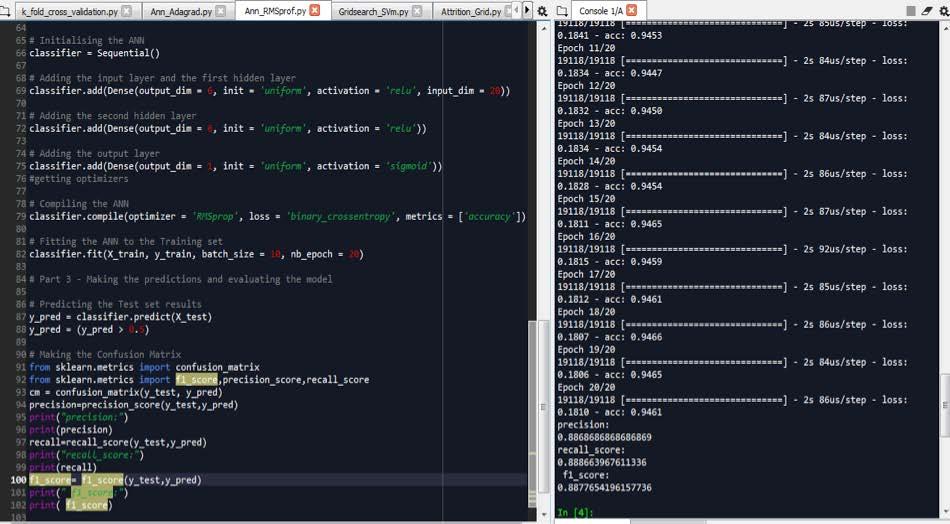
1 minute read
RMSprop
The RMSprop (Root Mean Square Propagation) optimizer is similar to the gradient descent algorithm with momentum. The RMSprop optimizer restricts the oscillations in the vertical direction. Therefore, we can increase our learning rate, and our algorithm can take larger steps in the horizontal direction and converge faster. It utilizes the magnitude of recent gradients to normalize the gradients. We always keep a moving average over the root mean squared (hence RMS) gradients, by which we divide the current gradient.
Gradients of very complex functions - such as neural networks - have a tendency to either vanish or explode as the energy is propagated through the function. The effect has a cumulative nature—the more complex the function is, the worse the problem becomes. RMSprop is a very clever technique to deal with this problem. It normalizes the gradient itself by using a moving average of squared gradients. This balances the step size; it decreases the step for large gradients to avoid exploding, and increases the step for small gradients to avoid vanishing.
Advertisement
Advantages of RMSProp
It is a very robust optimizer which has pseudo-curvature information. Additionally, it can deal with stochastic objectives very nicely, making it applicable to mini batch learning. It converges faster than momentum.
Disadvantages of RMSProp
Learning rate is still manual, because the suggested value is not always appropriate for every task.
Implementation of RMSProp Descent with Employee Attrition
Performance of Model After Using Optimization Algorithms
Below are the optimization algorithms with their respective metrics.
Optimizers
K-fold Grid Search Batch Normalization Stochastic Gradient Descent RMSprop Accuracy
0.9740 0.9742 0.9395 0.9568 0.9461
Conclusion
We implemented different models to predict attrition in a company, measured their accuracy, and employed the various optimization algorithms on a support vector machine to optimize its parameters. We observed that the accuracy of a model is improved by 3.4% - 94% without optimization and 97.4% with optimization using grid search. In this case, it is not a significant improvement. However, in reality we might have many more data sets where optimization improves performance significantly.
The purpose of the paper is to give an idea of various optimization techniques and how optimization helps to improve performance of any machine learning model.
Finally, we have a working model to predict which employees will leave the company and who will stay based on five input parameters with an accuracy of almost 98 percent.





